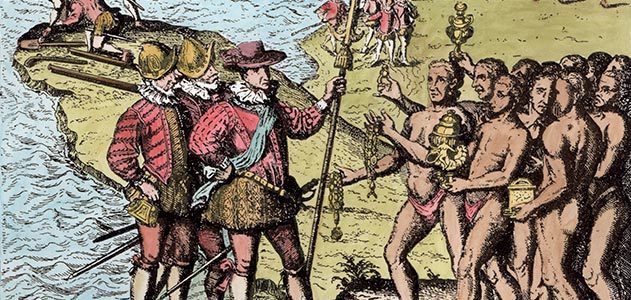By: Tom Malone
The learning goals of this DBQ enable students to formulate a viewpoint about a crucial point in world history through opposing perspectives. Students can interpret primary documents, architecture, and more modern images in order to obtain the European viewpoint as well as the  equally important Native American resident perspective. Students will enhance their primary document interpretation skills and their ability to interpret source validity.
equally important Native American resident perspective. Students will enhance their primary document interpretation skills and their ability to interpret source validity.
This DBQ project achieves these goals, though certain images could be enhanced and authenticated more precisely in order to give students enough information to critically analyze without giving too much information. Some prompts could include more information depending on the target audience and their prior contact with the subject matter.
As a thinking process, the DBQ serves as a strong element to any social studies lesson. The difficultly between including too much or too little information can be tricky. Selecting the proper document to present to students for analysis is the keystone to this method. DBQ design is delicate business, but it allows for freedom to reach common goals.
Investigate the DBQ: Cross-Cultural Contact between European Conquerors and Native Americans
This DBQ is part of our class-produced, multi-touch iBook. Available free at iTunes

